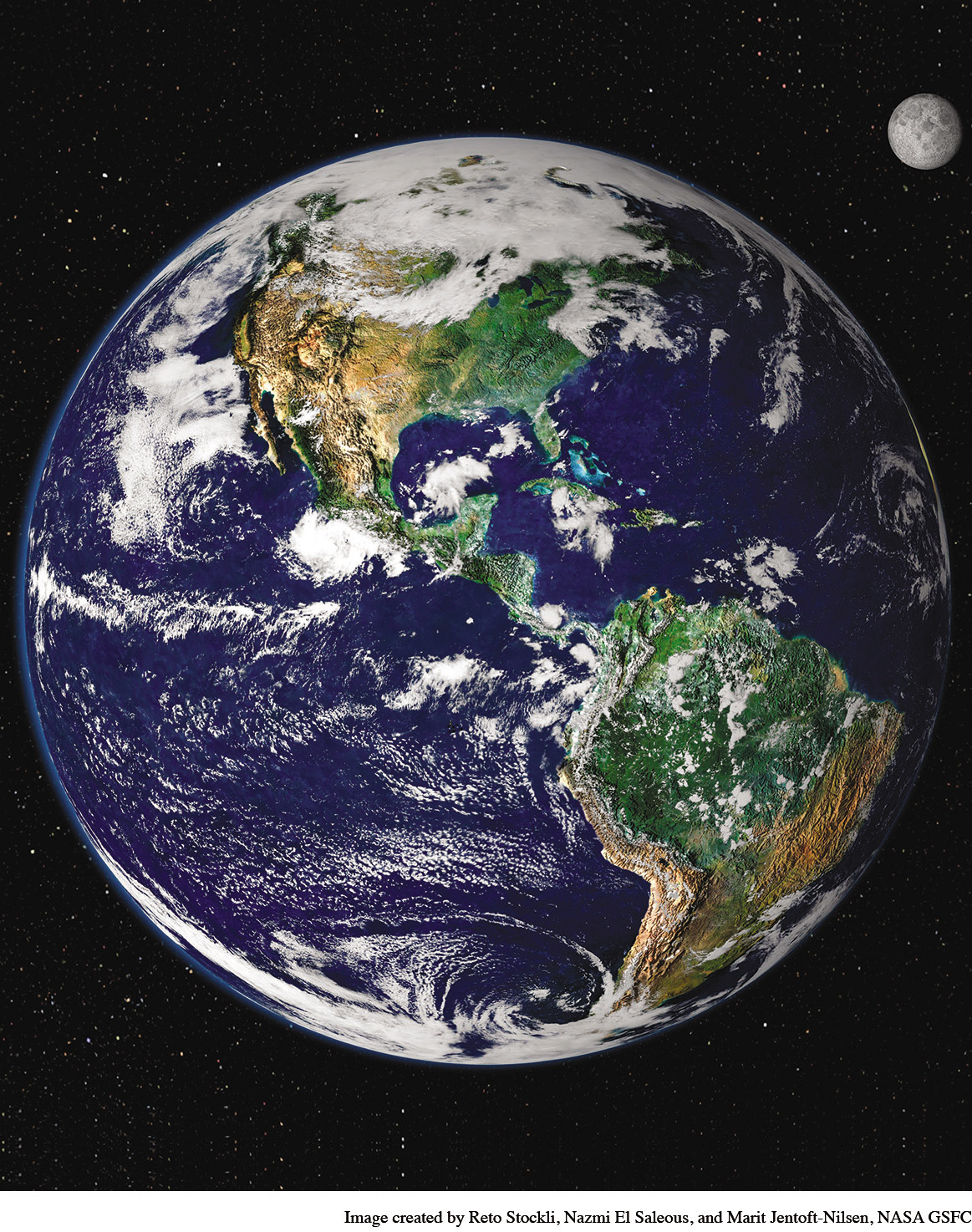Ways of the World with Sources
Printed Page 1022
Ways of the World
Printed Page 853
Chapter Timeline
Introduction to Chapter 23
The Acceleration of Globalization since 1945

One World This NASA photograph, showing both the earth and the moon, reveals none of the national, ethnic, religious, or linguistic boundaries that have long divided humankind. Such pictures have both reflected and helped create a new planetary consciousness among growing numbers of people. Image created by Reto Stockli, Nazmi El Saleous, and Marit Jentoft-Nilsen, NASA GSFC
Memey, a young uneducated woman from Java in Indonesia, was in a very difficult situation early in the twenty-first century. Her husband had died, leaving her in poverty with a young child. When she heard from a neighbor about waitressing opportunities in Malaysia, she saw a way of providing for her son. So she entered Malaysia illegally and was met by a contact person, who took her shopping for clothes and makeup. “After dinner,” she later recalled, “a man came for me and took me to a hotel room nearby to start work. That was when it finally dawned on me that it was not a waitressing job. I was being made to work as a sex worker.” Witnessing other women severely beaten or threatened, Memey was afraid to run away. After about four months in this situation, she was able to escape with the help of a sympathetic client, returning to Indonesia with bitter memories and an HIV infection. Subsequently she found work with an organization devoted to helping other women in her position.1
Memey was but one of millions of women victimized by international networks of sex trafficking. Those networks represented one dark and tragic thread in a vast web of political relationships, economic transactions, cultural influences, and the movement of people across international borders that linked the world’s separate countries and regions, binding them together more tightly, but also more contentiously. By the 1990s, this process of accelerating engagement among distant peoples was widely known as globalization. Debating the pros and cons of this encompassing pattern of interaction and exchange has been central to global discourse over the past half century or more. More importantly, it has been central to the lives of billions of individuals, like Memey, and to the societies they inhabit.
Although the term was relatively new, the process was not. From the viewpoint of world history, the genealogy of globalization reached far into the past. The Arab, Mongol, Russian, Chinese, and Ottoman empires; the Silk Road, Indian Ocean, and trans-Saharan trade routes; the spread of Buddhism, Christianity, and especially Islam—all of these connections had long linked the societies of the Eastern Hemisphere, bringing new rulers, religions, products, diseases, and technologies to many of its peoples. Later, in the centuries after 1500, European maritime voyages and colonizing efforts launched the Columbian exchange, incorporating the Western Hemisphere and inner Africa firmly and permanently into a genuinely global network of communication, exchange, and often exploitation. During the nineteenth century, as the Industrial Revolution took hold and Western nations began a new round of empire building in Asia and Africa, that global network tightened further, and its role as generator of social and cultural change only increased.
These were the foundations on which twentieth-century globalization was built. A number of prominent developments of the past century, explored in the previous three chapters, operated on a global scale: the world wars, the Great Depression, communism, the cold war, the end of empire, and the growing prominence of developing countries. But global interaction quickened its pace and deepened its impact after World War II. From the immense range of interactions that make up modern globalization, this chapter focuses on four major processes: the transformation of the world economy, the emergence of global feminism, the response of world religions to modernity, and the growing awareness of humankind’s enormous impact on the environment.
| A MAP OF TIME |
| 1919–1946 |
League of Nations |
| 1945 |
United Nations, World Bank, and International Monetary Fund established |
| 1960 |
Organization of Petroleum Exporting Countries founded |
| 1962 |
Rachel Carson publishes Silent Spring |
| 1963 |
Betty Friedan publishes The Feminine Mystique |
| 1967 |
Six-day Arab-Israeli war |
| 1970 |
Greenpeace established |
| 1973–1974 |
Arab members of OPEC place an embargo on oil exports to the West |
| 1979 |
Convention on the Elimination of All Forms of Discrimination against Women adopted by UN; Iranian revolution |
| 1982 |
Law of the Sea Convention establishes international agreement about the uses of the world’s oceans |
| 1994 |
North American Free Trade Agreement (NAFTA) enacted |
| 1995 |
World Trade Organization created |
| 1997 |
Kyoto protocol on global warming introduced |
| 2001 |
September 11 attacks on World Trade Center and Pentagon |
| 2008 |
Global economic crisis begins |
| 2011 |
Osama bin Laden killed |
| 2013–2014 |
The Islamic State, a radical jihadist organization, proclaims a new caliphate in parts of Syria and Iraq |
| 2014 |
Tunisia’s new constitution enshrines many rights of women; World Bank declares China the world’s largest economy; People’s Climate March in conjunction with the UN-sponsored Leaders Climate Summit |
SEEKING THE MAIN POINT
To what extent has globalization fostered converging values and common interests among the world’s peoples? In what ways has it generated new conflicts among them?
